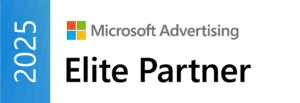B2B marketing is often like treading a fine line. Unlike B2C, you’re targeting organizations rather than individual consumers, making your advertising approach more complex.
Enter Pay-Per-Click (PPC) advertising, a strategy that, when executed correctly, can be your most profitable marketing channel. Whether it’s driving qualified leads or building brand awareness, PPC offers the precision targeting and scalability necessary to take your campaigns to the next level.
This guide dives into effective B2B PPC strategies you can use to unlock advertising success. Plus, we’ll include actionable tips to ensure your campaigns excel.
Why PPC Matters for B2B Businesses
If you’re wondering why PPC is a game changer for B2B businesses, here is something to consider:
Over 75% of users never scroll past the first page of Google search results. PPC helps guarantee placement at the top of the page.
Unlike other marketing channels, PPC allows your business to focus on intent-based marketing. When prospective customers search for solutions, they are already in the decision-making stage.
But to get results, you need strategies tailored for B2B’s unique requirements.
Key B2B PPC Strategies to Maximize Results
1. Understand Your Target Audience
Before building a PPC campaign, you need a deep understanding of your audience. Unlike B2C, B2B decisions are driven by team inputs, longer sales cycles, and specific pain points. Consider:
- Buyer Personas: Focus on job roles, industries, and company sizes.
- Pain Points: What is their biggest challenge? Target keywords and ad copy that address these pain points and provide solutions.
By aligning your PPC campaigns with your audience, you’ll drive more relevant traffic.
2. Focus on High-Intent Keywords
B2B searchers often use more specific, long-tail keywords, particularly when they’re in the later stages of the buying cycle. Examples could include:
- “Enterprise software comparison (industry specific)”
- “Top project management tools for large teams”
- “Affordable CRM software for startups”
Prioritize transactional or commercial intent keywords, and at the same time experiment with competitor keywords. Tools like Google Keyword Planner or SEMrush can help uncover these terms.
3. Create High-Converting Landing Pages
A well-optimized landing page can be the difference between a lead and a missed opportunity. Your landing pages must:
- Offer Value Immediately: Include concise headlines that convey your unique value proposition.
- Use Lead Magnets: Offer whitepapers, demos, or exclusive guides in exchange for their contact details.
- Include Strong CTAs: Guide visitors with clear calls-to-action. For example, “Request your Free Consultation” or “Start a Demo Now.”
Pro tip: Keep your forms simple. It was seen in a study that the form conversion rate decreases as the forms get more than five fields.
4. Leverage LinkedIn for Targeted Campaigns
LinkedIn is the platform for targeting B2B audiences. It lets you focus on job titles, industries, company size, and even professional skills. Here’s how to make LinkedIn Ads work for you:
- Sponsored Content: Share thought leadership articles or guides that align with your solution.
- Message Ads: Deliver personalized offers directly to professionals’ inboxes.
- Retargeting: Use retargeting to re-engage users who interacted with your brand but didn’t convert.
5. Incorporate Remarketing
Most leads won’t convert on their first visit. That’s why remarketing is essential. By reminding users of your solution, you keep your brand top-of-mind. Use strategies like:
- Google Display Remarketing to re-engage site visitors with display ads.
- Dynamic Remarketing for showcasing specific products or services they viewed.
- Cross-Channel Remarketing, especially for users who interacted on LinkedIn but didn’t convert.
6. Measure and Optimize Campaigns
No PPC campaign is perfect right out of the gate. Regularly track metrics to gauge performance, including:
- Click-Through Rate (CTR) to measure ad relevance.
- Cost Per Acquisition (CPA) to monitor the efficiency of your campaigns.
- Quality Score to determine how well your ads align with user expectations.
Use A/B testing on ad copy, CTAs, and landing pages to improve results over time. Platforms like Google Ads provide valuable insights for fine-tuning these elements.
Metrics That Drive Results in B2B PPC
Success in PPC is rooted in measurable outcomes. Here are the key KPIs every B2B marketer should track:
- Cost Per Lead (CPL): How much are you spending on each lead generated?
- Lead Quality and ROI: Are the leads generated actually converting into customers?
- Conversion Rate on landing pages.
- Impression Share to measure the dominance of your ad in the auction.
By partnering with a trusted PPC provider, like TiTech LLC, businesses have been able to drive billions in client revenues, scale their campaigns, and dominate their markets.
Bonus Tip
Keep an eye on competitors’ PPC strategies. Tools like SpyFu or Adbeat can reveal insights about competitor keywords and ad creatives to refine your approach.
Final Thoughts on Winning B2B PPC Strategies
A well-executed PPC strategy could be your B2B business’s secret weapon. With precise targeting, optimized ads, and continuous learning, you can unlock massive growth potential. Whether you’re a small tech firm or an enterprise service provider, the principles remain the same.
If you’re ready to transform your PPC campaigns but need a little assistance, TiTech LLC offers complimentary PPC audits to get you started. Unlock your advertising potential today. Request your free PPC consultation now.



